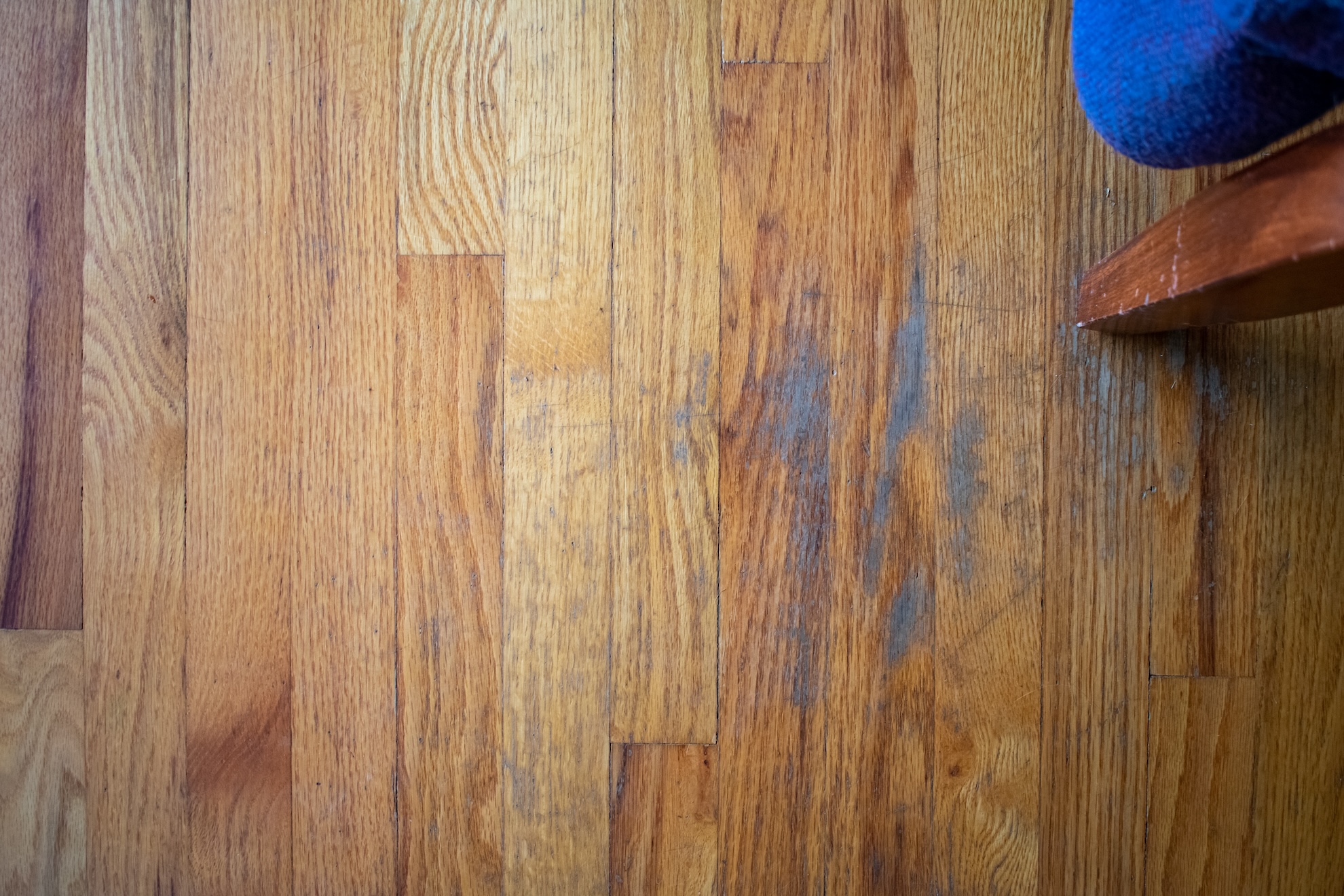
Have you noticed your floors sloping or feeling bouncy when you walk across them?
It’s easy to brush it off as an old-house quirk, but sagging floors are usually a sign of a deeper structural problem that could get worse (and more expensive) if it isn’t fixed fast.
At Total Home Performance, we fix sagging floors and the underlying issues that cause them. Here’s why sagging floors are so dangerous and how to resolve the problem for good.
What Causes Sagging Floors?
Sagging floors don’t just happen out of nowhere. They’re almost always caused by a problem with your floor joists.
You can think about floor joists as framing that supports your flooring. If that framing starts to weaken or deteriorate, the floor above it will sag.
Some of the most common causes of floor joist damage include:
1. Moisture
Moisture can cause your floor joists to warp and rot, and it will get worse over time. Typically, excess moisture comes from high humidity or standing water in your crawl space. If your crawl space is not encapsulated, or if you have a vented crawl space, it’s very likely the culprit.
2. Mold
Once your floor joists are wet, they will likely start to grow mold. The mold will eat away at them, leading to structural issues like sagging.
3. Pests
Termites, carpenter ants, and other pests can burrow into and eat away at wood. If they've gotten into your floor joists, you could be looking at a serious problem.
4. Insufficient or Failing Support
If the beams or columns supporting your floors are undersized, spaced too far apart, or have shifted due to settling soil, your floors can begin to sink or sag in certain areas.
5. Aging Construction or DIY Repairs
Older homes or past repair attempts that didn’t meet current building standards can leave your floors with poor support or uneven load distribution.
6. Plumbing Leaks
If you spring a leak in the wrong place and it goes unnoticed for too long, it can cause water damage to your floor joists, leading to rot and sagging.
Why Sagging Floor Joists Are a Problem
A sagging or uneven floor isn’t just a tripping hazard or an eyesore. It’s a warning sign that there’s something seriously wrong with your home’s foundation or structure.
Ignoring the issue can lead to:
- Worsening Structural Problems – The longer you wait, the more your floor framing can deteriorate, which makes sagging floor repair more difficult and more expensive.
- Moisture and Mold Issues – If moisture is making your floors sag, it’s almost undoubtedly causing other issues, too, like mold, which can make your family sick.
- Reduced Property Value – Sagging floors are a red flag for buyers and inspectors, and they can lower your home’s resale value.
How to Fix a Sagging Floor
To fix a sagging floor, you need to do two things:
1. Repair the Damaged Joist
The first step is to repair the joist itself. There are several ways to do this, and the right approach will depend on the underlying cause as well as the condition of the joists. We may recommend:
- Sistering - This involves attaching a new joist alongside the damaged one to reinforce it. Sistering provides added strength without fully removing the existing joist, making it a cost-effective option when damage is moderate.
- Floor Joist Replacement - If a joist is too rotted, cracked, or weakened to support the structure, we may need to remove and replace it entirely.
- New Structural Supports - When more support is needed, we’ll install new support beams or structural jacks beneath the joists to redistribute weight and correct sagging.
2. Resolve the Underlying Cause
Fixing the damaged joist is only part of the solution. If you don’t address what caused the damage in the first place, the problem will come back.
After we stabilize your floor, we take steps to eliminate the root cause. That might include:
- Crawl Space Encapsulation – Sealing off your crawl space from outside air and moisture to prevent future wood rot and mold growth.
- Moisture Management – Installing drainage systems, sump pumps, or dehumidifiers.
- Treated Wood - Using treated wood that’s designed to withstand moisture and pests can help reduce the risk of future floor joist damage.
Get Expert Floor Joist Repair for Your Home in Maryland or Delaware
If you’re worried about sagging floors, don’t wait for the problem to get worse. Call Total Home Performance today. We take a comprehensive approach to floor joist repair. We don’t just slap on a support beam and call it a day. We fix the underlying issues so the problem doesn’t come back.
Fix your sagging floor for good! Call 410-822-1390 to schedule floor joist repair today.
Worried about sagging floors?
Schedule a structural repair consultation today.
410-822-1390